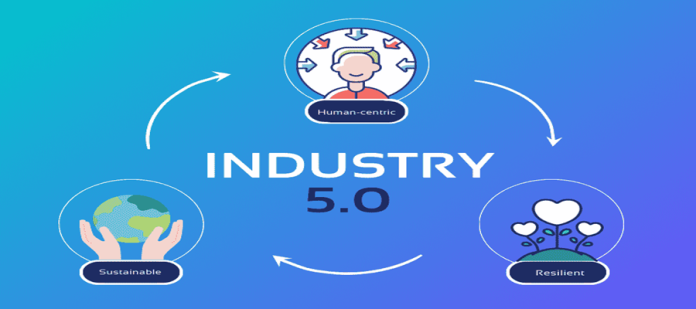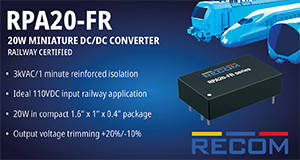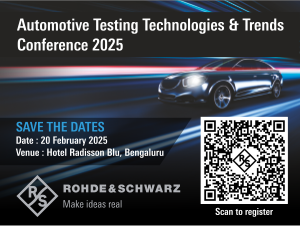Introduction: The Evolution to Industry 5.0 and the Role of Hyper-Accurate Sensors
Industry 5.0 represents the next leap in industrial evolution, emphasizing human-machine collaboration, hyper-connectivity, and AI-driven automation. Unlike Industry 4.0, which focused on full automation and cyber-physical systems, Industry 5.0 integrates human intelligence with advanced technology to achieve greater efficiency, sustainability, and personalization.
At the core of this transformation are hyper-accurate sensors, which provide real-time, high-precision data essential for advanced robotics, AI-driven decision-making, and intelligent manufacturing. These sensors are the backbone of predictive maintenance, digital twins, adaptive production lines, and self-optimizing industrial systems, ensuring unprecedented levels of control, efficiency, and reliability.
Why Hyper-Accurate Sensors Are Critical for Industry 5.0
As manufacturing becomes more sophisticated, the demand for ultra-precise and reliable sensors is at an all-time high. Key drivers include:
- High-Precision Manufacturing – Miniaturization and complex geometries require sensors with nanometer-level accuracy.
- Predictive Maintenance & Self-Healing Systems – Sensors that detect anomalies in real time prevent costly downtime and enable proactive repairs.
- Human-Robot Collaboration (HRC) & Intelligent Automation – Ultra-sensitive sensors ensure safe interaction between humans and machines.
- Autonomous Quality Control & Zero-Defect Manufacturing – AI-driven defect detection improves production efficiency and minimizes waste.
- Sustainability & Energy Efficiency in Smart Factories – Smart sensors optimize energy consumption and reduce environmental impact through adaptive control mechanisms.
Breakthrough Technologies in Hyper-Accurate Sensing for Industry 5.0
- Quantum Sensors: Unlocking Unprecedented Measurement Precision
Quantum sensors leverage principles of quantum mechanics to achieve unparalleled accuracy in detecting changes in electric, magnetic, or gravitational fields. Applications include:
- Ultra-precise gyroscopes for navigation in GPS-denied environments.
- Magnetometers for non-invasive fault detection in industrial machinery.
- Quantum-enhanced gravimeters for structural health monitoring in factories and critical infrastructure.
- AI-Enhanced Edge Sensors for Intelligent Decision-Making
Traditional sensors generate raw data, but AI-powered sensors process and analyze this data at the edge, reducing latency and improving response times. Key benefits include:
- Self-learning capabilities to detect micro-level deviations before failures occur.
- Real-time data fusion for complex multi-sensor environments.
- AI-driven self-calibration to enhance long-term accuracy and minimize drift.
- LiDAR and 3D Vision Sensors for High-Resolution Spatial Awareness
LiDAR (Light Detection and Ranging) is a critical technology in smart factories, offering:
- Millimeter-accurate object detection for precision robotic manipulation.
- 3D mapping of industrial spaces for dynamic logistics and warehouse automation.
- Precision alignment of micro-components in semiconductor and electronics manufacturing.
- Piezoelectric and Optical Sensors for Sub-Nanometer Accuracy
Advanced piezoelectric and optical interferometric sensors are redefining precision in industrial applications:
- Sub-nanometer resolution for micro-machining and semiconductor fabrication.
- Non-contact displacement sensing for wear monitoring and material integrity assessment.
- Ultra-fast response times for real-time vibration analysis in high-speed machinery.
- MEMS and NEMS Sensors for Scalable Miniaturized Accuracy
Micro-Electro-Mechanical Systems (MEMS) and Nano-Electro-Mechanical Systems (NEMS) enable:
- Microfluidic sensing for real-time chemical composition monitoring.
- MEMS accelerometers for high-frequency shock and vibration detection in aerospace and defense industries.
- NEMS-based temperature sensors for extreme precision in semiconductor and biotech applications.
Advanced Applications of Hyper-Accurate Sensors in Industry 5.0
- Predictive Maintenance & Self-Optimizing Machinery
Hyper-accurate sensors detect micro-failures and degradation patterns before catastrophic failures occur, allowing manufacturers to:
- Reduce unplanned downtime by up to 50% through early fault detection.
- Extend machinery lifespan by 30-40% through adaptive maintenance strategies.
- Minimize operational costs by shifting from scheduled maintenance to data-driven predictive servicing.
- Digital Twins & AI-Powered Real-Time Simulation
A digital twin is a dynamic virtual replica of a physical system, powered by sensor data. Benefits include:
- Continuous real-time performance monitoring for process optimization.
- Virtual simulation of process changes before deployment to mitigate risks.
- AI-driven real-time decision-making for adaptive control of industrial processes.
- Human-Robot Collaboration (HRC) & Adaptive Safety Mechanisms
For seamless interaction between humans and machines, hyper-accurate sensors enable:
- Proximity detection with sub-millimeter precision to prevent accidents.
- Haptic feedback and force sensing to enhance robotic dexterity.
- Gesture and motion recognition for intuitive human-machine interaction in manufacturing environments.
- Zero-Defect Manufacturing & Autonomous Quality Control
Advanced sensors revolutionize automated quality inspection with:
- High-resolution optical sensors and X-ray imaging for real-time defect detection.
- AI-driven pattern recognition to identify microscopic production deviations.
- Closed-loop feedback systems that dynamically adjust manufacturing processes to prevent defects in real time.
- Sustainable Smart Manufacturing & Energy Optimization
Smart sensors contribute to sustainability by:
- Monitoring real-time energy consumption at component and system levels.
- Optimizing heating, cooling, and power distribution for energy efficiency.
- Reducing material waste through precision control and automated resource allocation.
Future Challenges & Research Directions in Hyper-Accurate Sensing
- Overcoming Data Overload with AI & Edge Computing
With sensors generating terabytes of data per second, real-time processing and intelligent filtering are critical. Future research will focus on:
- AI-enhanced edge computing architectures to reduce latency.
- Neural network-driven anomaly detection for automated decision-making.
- Federated learning models to enable cross-factory data integration without compromising security.
- Cost & Scalability of Quantum and AI Sensors
While quantum and AI-enhanced sensors offer unmatched precision, their adoption is hindered by high costs and integration complexity. Solutions include:
- Mass-scale nanofabrication for cost-effective sensor production.
- AI model optimization to enable lightweight processing on embedded systems.
- Hybrid sensor architectures that balance cost, accuracy, and efficiency.
- Cybersecurity & Interoperability in Sensor Networks
With increasing connectivity, sensor networks are vulnerable to cyber threats. Key future developments include:
- Blockchain-secured sensor networks for data integrity.
- Universal communication protocols for seamless cross-industry adoption.
- AI-driven anomaly detection for real-time cyber threat mitigation.
Conclusion: The Future of Industry 5.0 with Hyper-Accurate Sensors
Hyper-accurate sensors are the cornerstone of Industry 5.0, enabling intelligent, efficient, and sustainable industrial ecosystems. As quantum sensing, AI-enhanced analytics, and edge computing converge, we are moving toward a future where factories operate with zero waste, predictive intelligence maximizes uptime, and human-machine collaboration reaches unprecedented synergy. The next decade will witness transformative breakthroughs in sensor technology, shaping the future of smart manufacturing, robotics, and industrial automation.








